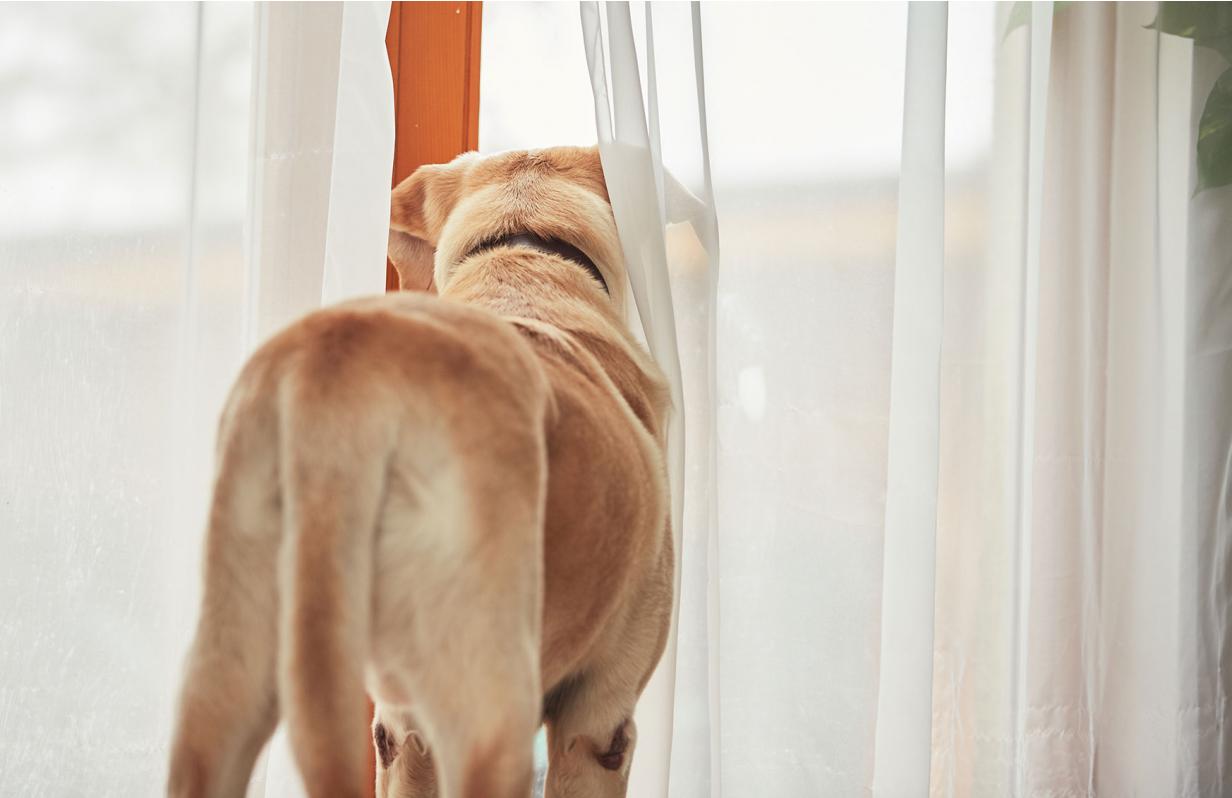
Keeping your pup happy and safe when you’re not home
We can’t be with our pups all day every day, but leaving your pet at home alone can be heartbreaking. Being prepared and making arrangements to ensure your dog is well taken care of when you’re not around will help put your mind at ease.
Here are our top tips for keeping your dog happy and safe when you’re not home:
Training
Unlike cats, dogs are social creatures. This presents a challenge when you’re trying to make him comfortable on his own. In an ideal world, you would train your dog to be comfortable with being alone when he’s still a puppy – as the sooner the better is always the preference for any kind of training.
Older dogs and those from rescue shelters can still be re-trained, but it might take a little longer.
Some tools you’ll need for training:
- A dog crate – a comfortable dog crate will imitate the comfort and safety of a den. You don’t want to lock him in the dog crate, but have it open in the space in your house when he will be allowed to be free when you are not home. This will help him stay calm and let him know he has a safe haven he can go to.
- Dog bed – your dog will instinctively go to his comfortable bed when he needs to self-soothe (when you’re not around), and similar to the dog crate, if you want to confine your dog to a certain area of your house when you’re out you need to ensure his bed is also in this space.
- Puppy training pads – for younger dogs who may need the toilet frequently, puppy trainer pads will let them go in the house without making a big mess.
If you can, be away for short amounts of time in the beginning, and gradually increase the amount of time your dog is on his own.
If this isn’t an option, try encouraging him to spend time in his bed or crate when you’re doing something else (like watching TV or doing some chores) by giving him a chew toy to keep him busy. Soon he will learn to enjoy these times on his own and it’ll help him to cope better when you’re not there at all.
Morning exercise is key
Tire your pup out before you leave the house by taking him for a morning walk or run, he’ll feel sleepy afterwards and less likely to act out when he sees you leaving. It’ll also guard against him destroying any of your furniture when you’re away, as a dog who gets regular exercise and play is less likely to be bored and cause any trouble.
Walking him twice a day will also give him an opportunity to use the toilet.
Keep your routine
A routine is generally very important for canines, but in particular, when you’re leaving a dog alone he will benefit hugely from having a solid pattern.
Have a consistent time for play, meals, and walks in the day as it will keep your dog calm. It also makes it far easier for a dog-sitter or friends when there is a routine already established.
When you get home, give your pup lots of love and attention and take him for a walk to help him burn his energy.
In an ideal world, you wouldn’t be away from your dog for too long, and if you can’t be there for a full working day, try getting a dog trainer or a friend to check in on him.
It is understandable that you might be anxious about leaving your dog alone. But try not to show this in front of him. Dogs have brilliant senses and he will be aware of your worry and become nervous himself. Remain calm and consistent throughout this training so that he understands that it’s safe to be alone.
- 659
